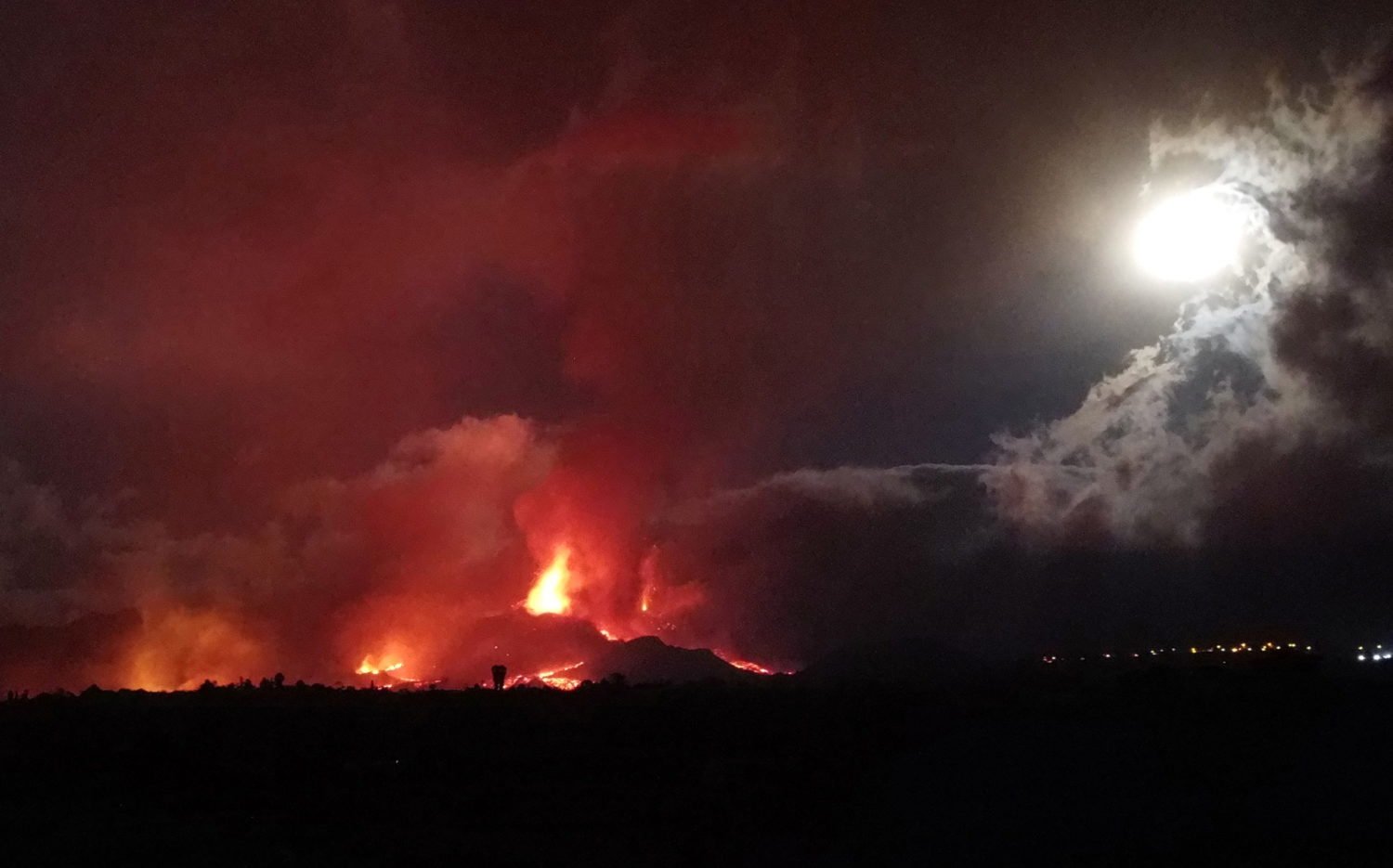
By Borja Suarez and Marco Trujillo
LOS LLANOS DE ARIDANE, Spain (Reuters) -Families rushed to retrieve belongings from their homes and escape the advancing lava on Tuesday, as sirens sounded and helicopters flew overhead in air filled with smoke from an erupting volcano on the Spanish island of La Palma.
One family of three in the town of Los Llanos de Aridane, threatened by the lava running to the coast, hurried to load a Toyota van with mattresses, a fridge, washing machine and bags stuffed with clothes.
Residents in Los Llanos de Aridane were given one hour to pack up and flee, a scene played out over La Palma in the Canary Islands since the volcano erupted on Sunday, forcing 6,000 people to evacuate. At least 166 houses have been destroyed so far.
Regional leader Angel Victor Torres said emergency services were powerless to stop the lava’s “inexorable” advance to the sea and that more homes, churches and agricultural land would be consumed.
While the total damage remains hard to predict, he said it would far exceed the 400 million euro threshold needed to qualify for European Union aid.
Authorities have warned that as it hits the sea, the lava could create a cloud of toxic gases and possibly explosions as the molten rock cools rapidly.
Marine authorities were keeping a two-nautical-mile zone offshore closed as a precaution “to prevent onlookers on boats and prevent the gases from affecting people,” the island council’s chief Mariano Hernandez told Cadena SER radio station.
He urged people to stay away. A road collapse partly hampered the evacuation on Monday.
The lava flow was initially expected to reach the shore on Monday, but it is now moving more slowly. More people had to be evacuated late on Monday and early on Tuesday after a new stream of lava started flowing from another crack on the slope of the Cumbre Viejo volcano.
“The lava on its path to the sea has been a bit capricious and has diverted from its course,” El Paso’s mayor Sergio Rodriguez told state broadcaster TVE.
The volcano started erupting on Sunday, shooting lava hundreds of meters into the air after La Palma, the most northwestern island in the Canaries archipelago, had been rocked by thousands of quakes in the prior days.
No fatalities or injuries have been reported, but drone footage captured two tongues of black lava cutting a devastating swathe through the landscape as they advanced down the volcano’s western flank towards the ocean.
A Reuters witness saw the flow of molten rock slowly engulf a house in the village of Los Campitos, igniting the interior and sending flames through the windows and onto the roof.
As of Tuesday morning, the lava had covered 103 hectares and destroyed 166 houses, according to data released by the European Union’s Copernicus Emergency Management service.
Emergency authorities have said residents should not fear for their safety if they follow recommendations.
(Reporting by Borja Suarez, Marco Trujillo, Nacho Doce, Inti Landauro, Catarina Demony, Nathan Allen; writing by Clara-Laeila Laudette; Editing by Ingrid Melander, Angus MacSwan and Janet Lawrence)



